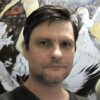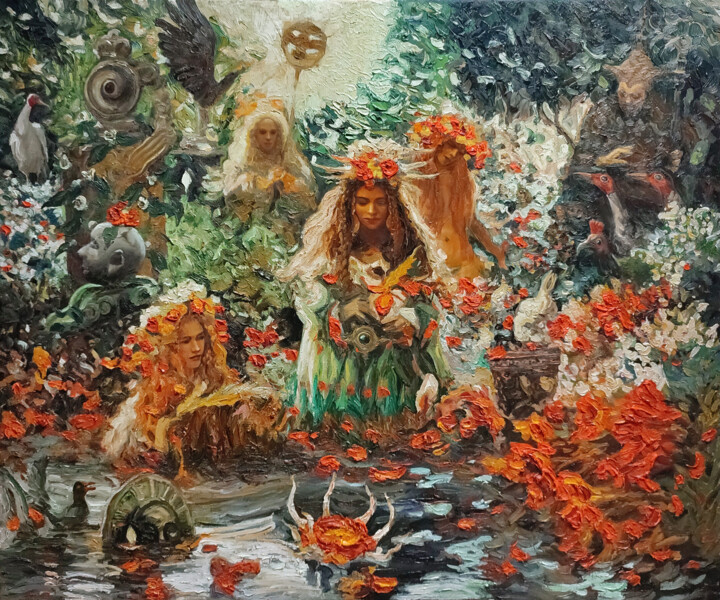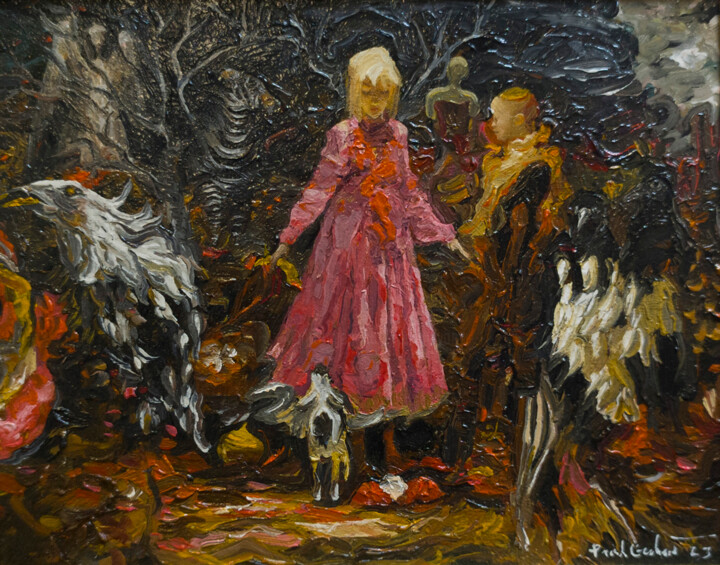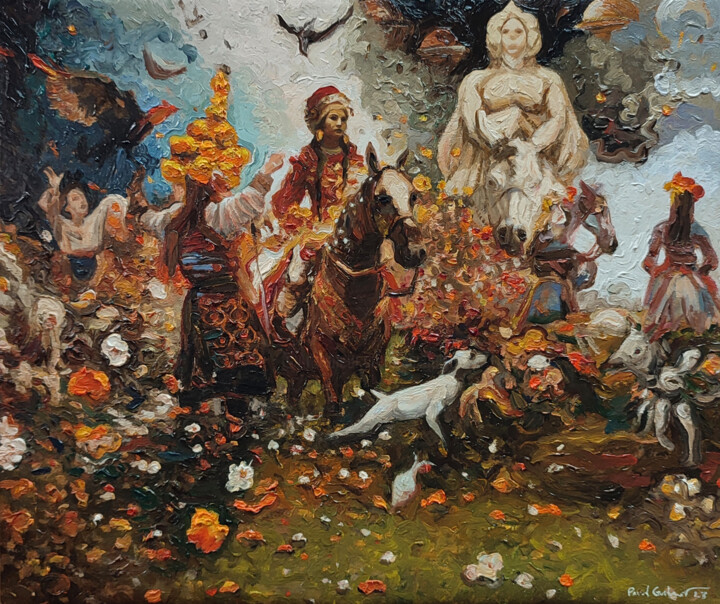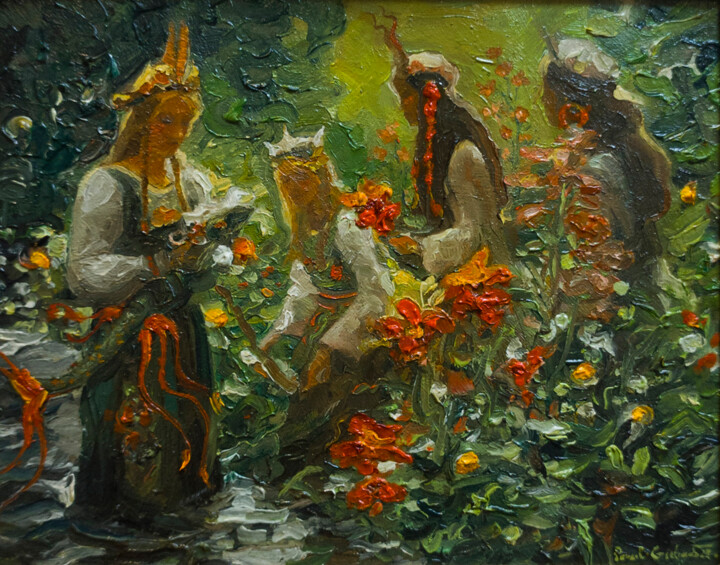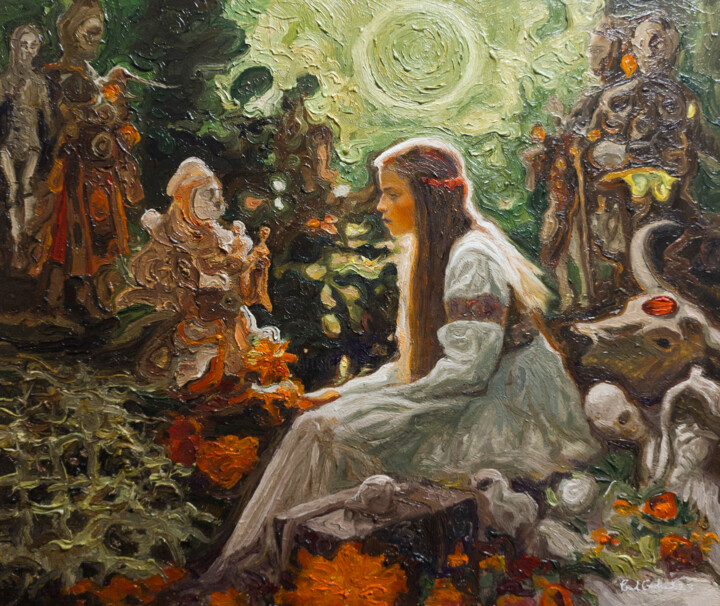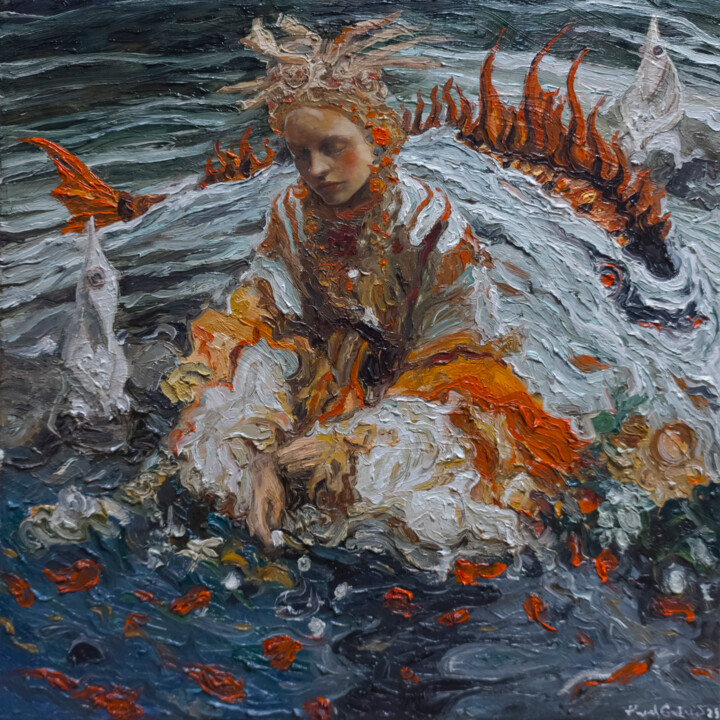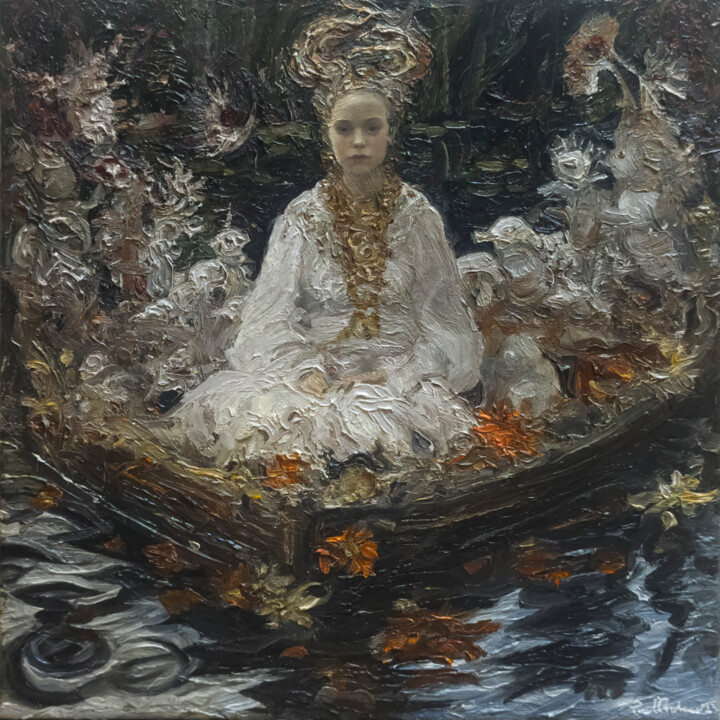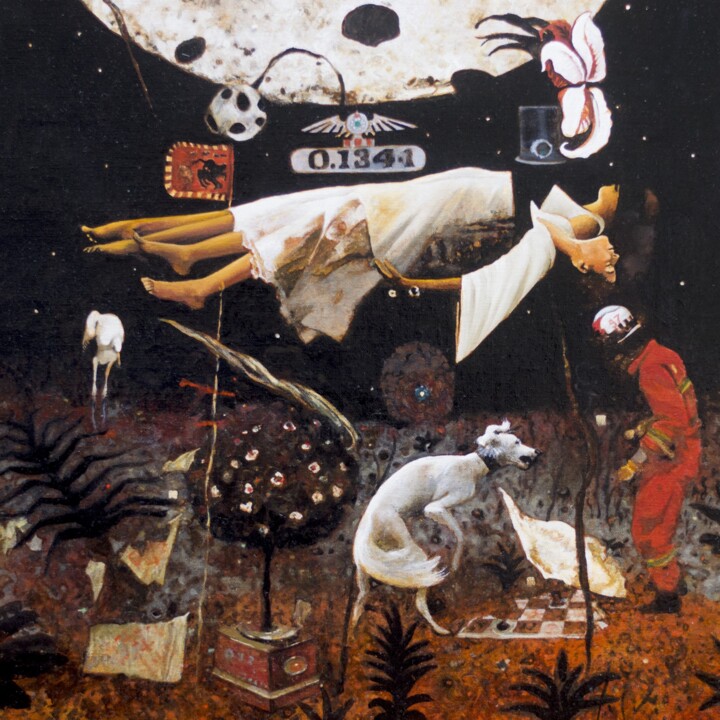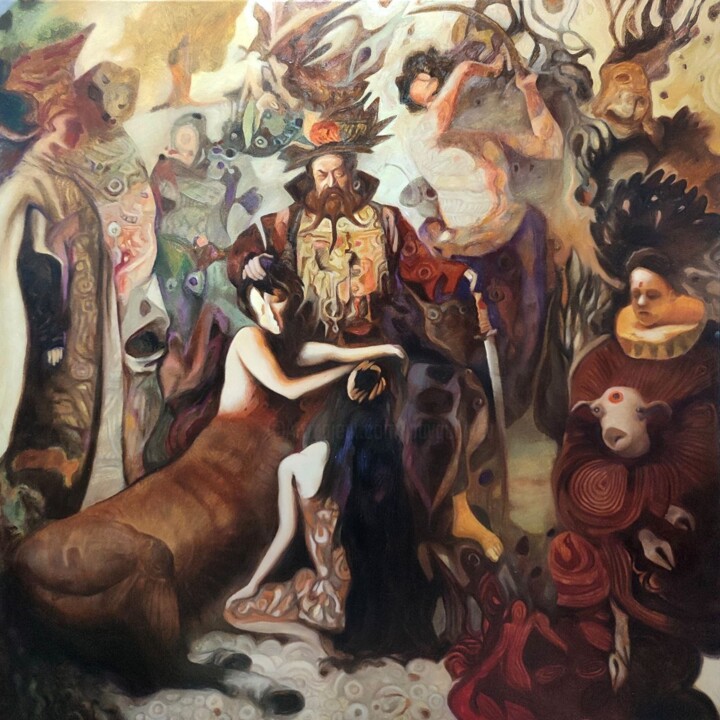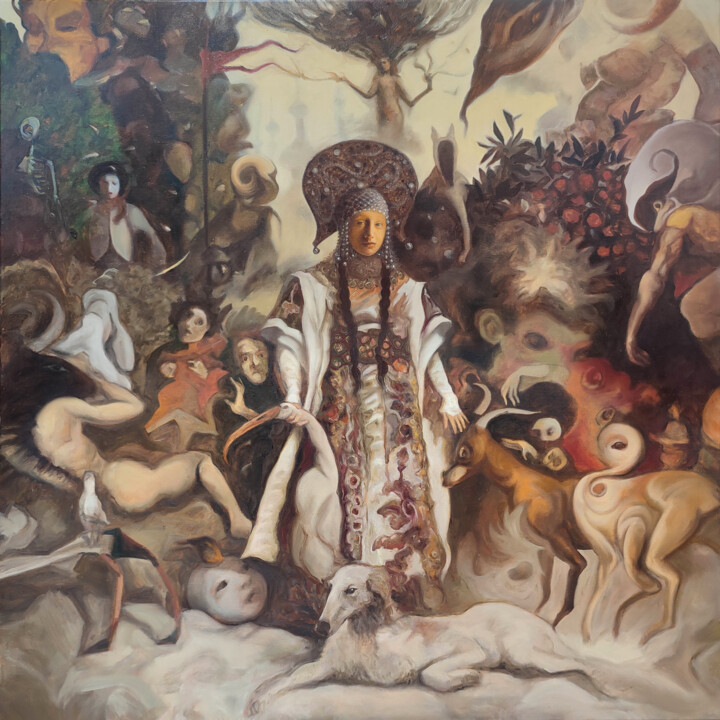What inspired you to create art and become an artist? (events, feelings, experiences...)
There were no professional artists in my family, but everyone loved to draw. I drew from an early age. At first, it was Indians and horses, but then I started illustrating fairy tales and drawing historical subjects (usually battle scenes). For me, it was something magical when a new world appeared on a white sheet of paper, a feeling that cannot be compared with anything.
What is your artistic background, the techniques and subjects you have experimented with so far?
I am a graduate of the Moscow Printing Academy. I am a professional illustrator. For a while, I illustrated children's books and novels. But later I realised that I lacked freedom of expression. An illustrator depends on the text and the publisher, and I wasn't happy with that. So I decided to become a freelance artist so that I could express my thoughts in my work. It took me a long time to find my style and theme. I experimented with different techniques: watercolor, ink, acrylic, and mixed media. But in the end, I settled on oil on canvas. This technique allows me to reflect on what I see in my imagination. I have always loved doing figurative, narrative paintings. In search of my style, I did several paintings in the style of Surrealism, Symbolism, and Magic Realism. But in the end, I realized that I didn't want to be constrained by any direction. So I discovered my own direction, which included everything I wanted to use: surrealism, symbolism, abstraction, realism, expressionism, and whatever else I needed to get my idea across more accurately in a painting. I called my style «Subjective Realism».
What are the 3 aspects that differentiate you from other artists, making your work unique?
Every artist who makes their art is unique. And each work, if it is not a copy, is unique. My paintings are the result of my technical and professional experience, my life experience, and my imagination.
Each of my paintings combines realism and symbolism, unites the physical and metaphysical worlds.
Each of my paintings tells its own story, which I came up with.
Each of my paintings forces the viewer to come up with their own story since these are not illustrations with a rigidly prescribed plot, thus each viewer becomes my co-author.

Where does your inspiration come from?
All life around me is the source of my inspiration. Politics, history, myths, religion, folklore, even someone’s photo, a film, a book, the shadow of a tree, cracks in the asphalt - everything that can take over my thoughts and feelings at any moment and allows my imagination to work.
What is your artistic approach? What visions, sensations or feelings do you want to evoke in the viewer?
I make paintings that I can live in. Each of my paintings is a piece of reality that I have created. I want every viewer to be able to share with me the joy of discovering a new world. Each of my paintings should entice the viewer with something special, unusual and at the same time recognisable in some details.
What is the process of creating your works? Spontaneous or with a long preparatory process (technical, inspiration from art classics or other)?
Yes, I do a lot of preparatory work for each painting. I spend more time on sketches and searching for ideas than on the actual process of painting a picture with paints on canvas. And I love to experiment with ideas, styles and techniques. As for inspiration, it is always with me.
Do you use a particular work technique? if so, can you explain it?
For the last few years, I have been working in oil on canvas. This technique is the most convenient for me so that I can convey exactly what I want and not depend on the random effects of this or that technique. It is a classic technique used to create most of the world's greatest classical masterpieces. And, of course, oil painting has fascinated me since childhood. Now I do impasto painting, which is painting with a thick layer of paint applied with a palette knife or brush. This technique doesn't allow for a lot of fine, precise details like photorealism, but it gives the painting expression and tactile sensations.
Are there any innovative aspects in your work? Can you tell us which ones?
Everything I do is classical rather than innovative. Yes, I can mix painting techniques, painting directions, ideas. But everything I do is based on the classical laws of drawing and painting. Everything that was done by artists before me is the basis of what I do now, I respect all my predecessors and those who are making art now.
Do you have a format or medium that you are most comfortable with? if yes, why ?
I usually paint on canvas. Canvas on a stretcher is more convenient for work and transportation. I'm always experimenting with formats, depending on the idea of the painting, but lately, I've been using the square more often. I just like it.
Where do you produce your works? At home, in a shared workshop or in your own workshop? And in this space, how do you organize your creative work?
I work in my workshop. It allows me not to be distracted by outside noise, which is very important to me. I work every day with no days off, except for meetings, holidays and family time.
Does your work lead you to travel to meet new collectors, for fairs or exhibitions? If so, what does it bring you?
Yes, the work of an artist is not only the process of creating paintings but also the process of selling them, which is the most important stage for the artist. Therefore, traveling, taking part in exhibitions and fairs, as well as personal acquaintance with collectors play a big role in promoting me as an artist.
How do you imagine the evolution of your work and your career as an artist in the future?
Of course, I hope to become a more famous artist in the world. I would also like to try my hand at graphics, sculpture, ceramics and video art. What I can say for sure is that I will constantly change and strive for perfection. And I hope that nothing will stop me from doing my favorite thing - art.
What is the theme, style or technique of your latest artistic production?
I'm currently working on a series of paintings that I call "Idolatry." This series is based on Slavic mythology, rituals, and my interpretation of history. I make this series using the impasto technique, which allows me to convey the unrestraint, colourfulness, and mythical nature of this theme.
Can you tell us about your most important exhibition experience?
Every exhibition or fair in which I participated was a bright, impressive and useful experience for me. Overall, meeting collectors and artists at exhibitions is an invaluable experience for any artist. The most memorable fairs for me were in Berlin, Cologne, Brussels and Paris. I was especially impressed by Paris, since the exhibition took place in the Louvre, which every artist dreams of visiting.
If you could have created a famous work in the history of art, which one would you choose? And why ?
Nowadays, in my opinion, it is very difficult to create a masterpiece of art. Things are changing too quickly. What is extolled today may depreciate tomorrow. But I would choose "Hunters in the Snow" by Bruegel. Simply because I like it and I can live in it.
If you could invite one famous artist (dead or alive) to dinner, who would it be? How would you suggest he spend the evening?
I would invite Pablo Picasso. I would drink Spanish wine with him and listen to his chatter. I think he must have been a good storyteller.

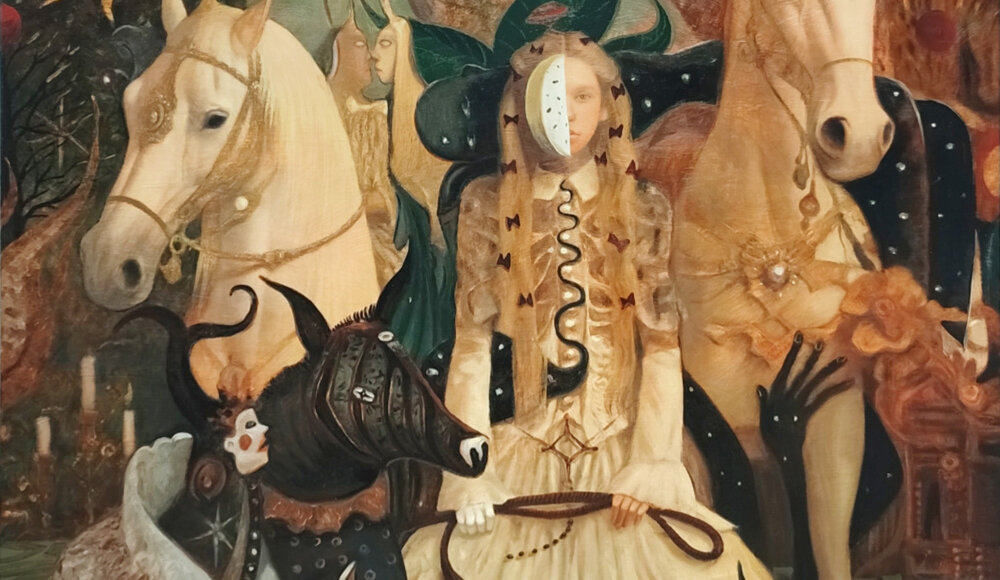



 Olimpia Gaia Martinelli
Olimpia Gaia Martinelli
